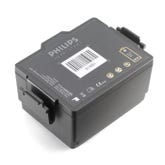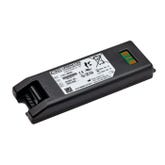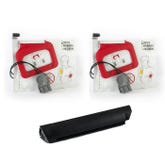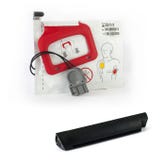AED Batteries: Rechargeable vs. Non-rechargeable
- Apr 30, 2018

Which AED Battery is Right For You?
When deciding which AED is right for you, there are plenty of important considerations ranging from weight to overall cost to ease of maintenance. Because the type of battery your AED requires has a direct impact on weight, cost, and maintenance, this week we’re devoting an entire post to the topic.
Not only will we cover the pros and cons of non-rechargeable AED batteries versus rechargeable batteries, but we’ll provide you with a complete product list detailing the type of battery that powers each device.
Pros and Cons of Non-Rechargeable AED Batteries
Pro: Extended Battery Life
Most non-rechargeable lithium AED batteries have a useful lifespan of four to five years, assuming the device remains in “standby” mode. When your device remains in “standby,” battery use is minimal. In fact, it’s only in use only when your AED performs automatic, routine self-tests.
Pro: Low Maintenance
Non-rechargeable batteries are extremely easy-to-use and require very little or no maintenance. Simply insert the battery or batteries into your AED and you’re good to go! Non-rechargeable AED batteries are good options for non-professional, low-use settings such as an office or residential environment.
Con: Cost
If your AED sees repeated use, and therefore experiences frequent battery drain, you may find that replacing non-rechargeable AED batteries can be costly. AEDs with non-rechargeable batteries are best-suited for rare to occasional use.
Con: Environmental Impact
Lithium batteries should be properly recycled to minimize environmental harm. First, refer to your AED user guide to determine what kind of AED battery your device uses. We encourage you to contact the manufacturer of your device to determine whether or not they have a recycling program. If you’re unable to recycle your AED battery through the manufacturer, contact your local recycling center for recommendations.
Rechargeable AED Batteries
Pro: Best Battery for Professional Rescuers
Although the initial cost of a rechargeable battery is comparable to non-rechargeable batteries, rechargeable AED batteries are most commonly used by professional rescuers. When an AED is in a high-use environment, battery drain can be significant. In this scenario, recharging is more practical, efficient, environmentally friendly, and cost-effective than replacing a non-rechargeable battery on a monthly basis!
Con: Limited Battery Lifespan
It’s not at all uncommon for rechargeable batteries to be replaced after two years. Your device will alert you when it’s time to replace the battery.
Con: Charging Time and AED Downtime
Charging time varies by manufacturer and may range from two to 10 hours. If your AED sees frequent use, we strongly urge you to consider investing in a backup battery so your AED is always rescue-ready.
Con: Maintenance and Additional Costs
Unlike non-rechargeable batteries, rechargeable batteries need to be recharged frequently. In many instances, batteries need to be recharged monthly. You’ll also need a manufacturer-specific charging station.
AED Battery Type By Manufacturer
Non-Rechargeable
- ZOLL AED Plus
- ZOLL AED Pro
- Cardiac Science Powerheart G3 Pro
- Cardiac Science Powerheart G3
- Cardiac Science Powerheart G5
- Physio-Control LIFEPAK 1000
- Philips HeartStart OnSite
- Philips HeartStart FR3
- Philips HeartStart FRx
- HeartSine Samaritan PAD 350
- HeartSine Samaritan PAD 450
- HeartSine Samaritan PAD 360
- Defibtech Lifeline
- Defibtech Lifeline View
Generally speaking, we recommend AEDs with rechargeable batteries for professional rescuers or when a device is likely to see frequent use, either in a rescue or monitoring situation. For non-medical or infrequent use, long-lasting non-rechargeable batteries are advised.









 CALL US:
CALL US: